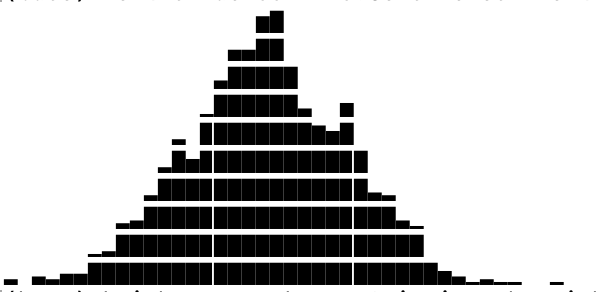termplotlib is a Python library for all your terminal plotting needs. It aims to work like matplotlib.
For line plots, termplotlib relies on gnuplot. With that installed, the code
import termplotlib as tpl
import numpy as np
x = np.linspace(0, 2 * np.pi, 10)
y = np.sin(x)
fig = tpl.figure()
fig.plot(x, y, label="data", width=50, height=15)
fig.show()produces
1 +---------------------------------------+
0.8 | ** ** |
0.6 | * ** data ******* |
0.4 | ** |
0.2 |* ** |
0 | ** |
| * |
-0.2 | ** ** |
-0.4 | ** * |
-0.6 | ** |
-0.8 | **** ** |
-1 +---------------------------------------+
0 1 2 3 4 5 6 7
import termplotlib as tpl
import numpy as np
rng = np.random.default_rng(123)
sample = rng.standard_normal(size=1000)
counts, bin_edges = np.histogram(sample)
fig = tpl.figure()
fig.hist(counts, bin_edges, orientation="horizontal", force_ascii=False)
fig.show()produces
Horizontal bar charts are covered as well. This
import termplotlib as tpl
fig = tpl.figure()
fig.barh([3, 10, 5, 2], ["Cats", "Dogs", "Cows", "Geese"], force_ascii=True)
fig.show()produces
Cats [ 3] ************
Dogs [10] ****************************************
Cows [ 5] ********************
Geese [ 2] ********
import termplotlib as tpl
import numpy as np
rng = np.random.default_rng(123)
sample = rng.standard_normal(size=1000)
counts, bin_edges = np.histogram(sample, bins=40)
fig = tpl.figure()
fig.hist(counts, bin_edges, grid=[15, 25], force_ascii=False)
fig.show()produces
Support for tables has moved over to termtables.
termplotlib is available from the Python Package Index, so simply do
pip install termplotlib
to install.
To run the termplotlib unit tests, check out this repository and type
pytest











